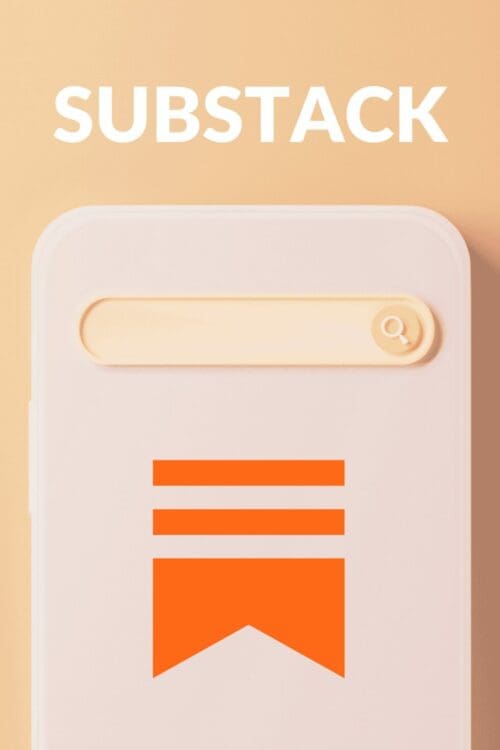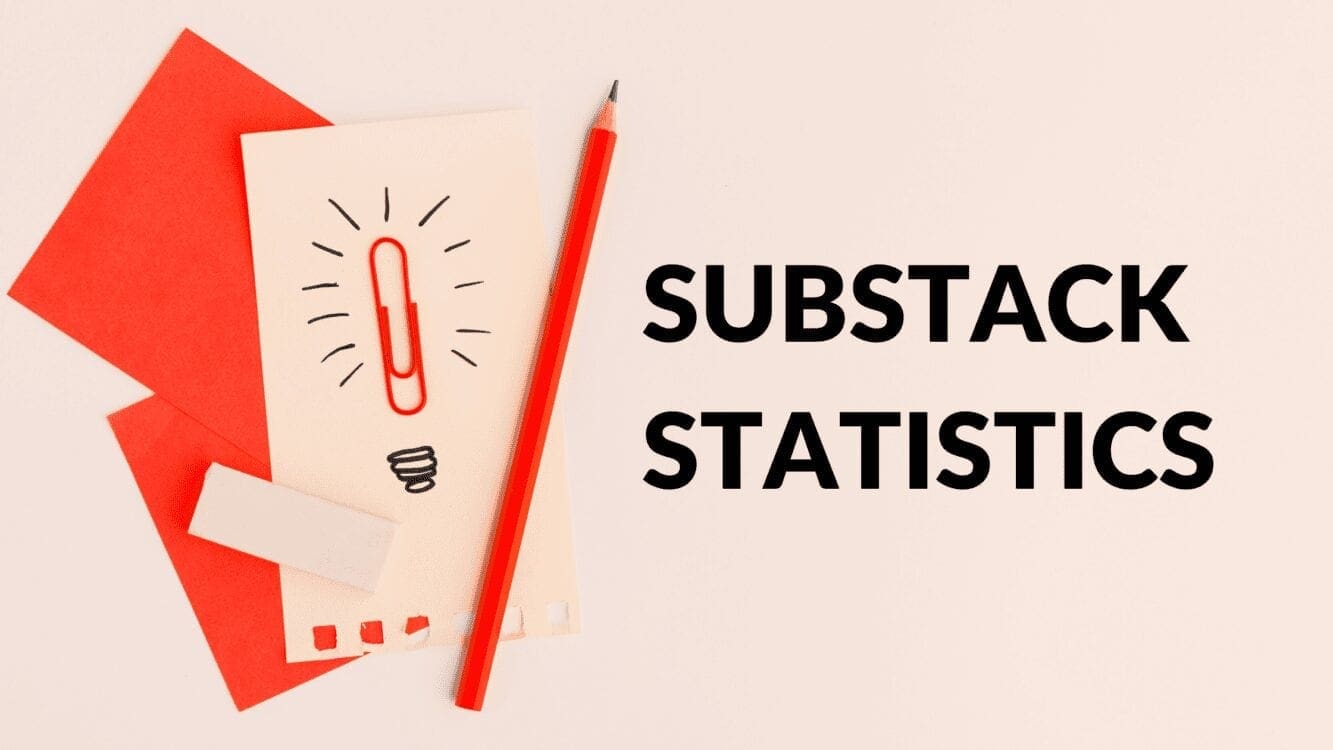Disclosure: Some of the links below are affiliate links, meaning that at no additional cost to you, I will receive a commission if you click through and make a purchase. Read our full affiliate disclosure here.
When I was building my first Substack newsletter, there were no third party resources available for newsletter creators. Getting my first 250 paid subscribers was hard! That's why I created the first Substack Course.
CASEY BOTTICELLO
Founder, Blogging Guide
Substack makes it simple for a writer to start an email newsletter that makes money from subscriptions. Substack provides web and newsletter publishing tools that are purpose-built for paid subscriptions. Substack is popular with many writers because it’s an all-in-one solution for writers looking to monetize their newsletter. Substack also allows audio creators the ability to charge and distribute their podcasts through Substack’s newsletter delivery system.
While many bloggers associate Substack with newsletters than with blogging, Substack is actually a hybrid of the two models. You can (1) send subscribers newsletter posts and (2) have those posts published on your Substack newsletter domain, like a traditional blog post.
Alternatives to Substack
Ghost is an open source blogging platform for writers and journalists. It boasts a minimalist and straightforward user interface that simplifies blogging for its users. Ghost offers SEO tools and plugins that are built into the software, making it easy for users to optimize their content. The Ghost platform is utilized by amateur bloggers, as well as experienced editors based at large media organizations.
What really sets Ghost apart from other blogging platforms is the range of services you can easily offer. This is increasingly important in a world of blog hybrid-products, such as subscription newsletters, membership sites, gated digital content, offering courses, and selling digital products.
WordPress is one of the world’s most popular open-source platforms. More than one-third of all websites currently run on WordPress. It is commonly used as a content management system (CMS) for websites, as well as for blogging.
The appeal of WordPress is that no technical knowledge or experience is required to use it. The platform is utilized by bloggers, small business owners, and even Fortune 500 companies.
WordPress is probably the closest direct competitor to Ghost. WordPress is generally regarded as simpler to use than Ghost, while still offering a greater versatility than any other platform on this list. Perhaps the greatest strength of WordPress is its library of WordPress plugins for bloggers.
Patreon is a membership based website providing a range of business tools to help creators monetize their products via subscriptions. Through Patreon, creators allow fans to access exclusive content, additional viewership, and other perks in exchange for a monthly fee.
This business model allows its members – which includes video creators, writers, musicians, game creators, podcasters and more – to maintain creative freedom while getting paid what they are worth.
Patreon differs from Ghost in that it charges 5%-12% of a creator’s gross revenue. Ghost charges a flat monthly fee ranging from $10-$250. This can result in saving hundreds or thousands of dollars of savings by using Ghost as opposed to Patreon.
Letterdrop is a newsletter and blog publishing platform built for small businesses. It makes it easy to build an independent media business or the media arm for a business. Writers can make money through paid subscriptions, sponsorships, or freelancing for other Letterdrop publications. Businesses can collaborate with their team and freelancers to produce content that converts.
Compared to Ghost, Letterdrop is a relatively new digital publishing platform. So it will still probably take several years to establish if it can deliver on all of its ambitions. But even with the unique monetization features currently offered, Letterdrop is a viable alternative to Ghost.
It also operates many of the same functions that writers would normally use Substack, Revue, or Patreon for (charging for membership, accessing subscription newsletters, starting a blog/newsletter hybrid, etc.).
Substack makes it simple for a writer to start an email newsletter that makes money from subscriptions. Substack provides web and newsletter publishing tools that are purpose-built for paid subscriptions. Substack is popular with many writers because it’s an all-in-one solution for writers looking to monetize their newsletter. Substack also allows audio creators the ability to charge and distribute their podcasts through Substack’s newsletter delivery system.
Substack represents a Ghost competitor that charges higher fees (like Patreon) but offers a very user-friendly platform for newsletter creators, specifically. Substack has done a great job positioning themselves as the go-to newsletter creation platform in the passion economy.
NewsBreak is a local news aggregation and digital publishing platform. The content from this platform is largely featured on the NewsBreak functions mobile app. NewsBreak now boasts 23 million monthly users with a growing network of more than 10,000 content providers. Sensor Tower estimated the app has more than 50 million installs globally across iOS and Android devices, among which more than 99% are from the U.S.
The platform originally launched with a $1,000 per month “guarantee” for writers who were accepted into their creator program and met certain publishing requirements.
It has since shifted to a model that pays a minimum per article based on a CV score of 1-10 assigned to each article published. There is also a payment rate based on page views and referrals.
Medium is one of the most popular blogging and digital publishing platforms on the Internet. It allows anyone to easily create and publish a blog post, with a sleek and minimalist design. Medium is popular among writers because of its Partner Program which allows writers to get paid for articles that are posted on the platform.
Medium is unique because it is probably the single best blogging platform for writers who just want to write, build an audience, and get paid. Medium pays writers based on total member reading time and provides writers with a built in audience. It also is free and eliminates any effort required to start your own site.
That said, Medium is not the best blogging platform to make money for every blogger. Typically, the bloggers who do the best on Medium are those that utilize the platform to build an audience, earn a little money with the Partner Program, but ultimately, eventually migrate to their own platform (WordPress or Ghost) or monetize their writing in a different way (subscription newsletters with Substack).
Vocal.Media is a platform for supporting, discovering, and rewarding creators. Vocal provides the storytelling tools and engaged communities for writers, musicians, filmmakers, artists, and all types of creatives to get discovered, and fund their creativity. Vocal was designed to expand the audience for content distribution and advance writers’ efforts on monetizing their content through various features.
Vocal helps writers earn in a few different ways.
First, Vocal pays creators based on the amount of “reads” their stories receive.
- Vocal creators are paid $3.80 per 1000 reads.
- Vocal+ creators are paid $6.00 / 1000 reads.
Second, Vocal also facilitates tips from your fans. Tipping allows your readers to pay you directly for your stories, with micropayments that go straight into your Stripe account.
Wattpad brings authors and readers together online through its website and mobile app. The platform is free for all users and promotes a social community experience based on the original stories that are shared. Both amateur and established writers publish stories on Wattpad from a wide variety of genres, including Young Adult fiction, romance, fantasy, and techno-thrillers. Wattpad has steadily grown in popularity, reaching 80 million readers and writers, due to its ease of use and simple business model.
Steemit is a blogging platform with a social network and cryptocurrency component. It borrows some of the features of Reddit in that it allows users to upvote and downvote content, as well as follow topics, have discussions, and submit content of your own. However, users also have the ability to earn a share of revenues in the form of Steem cryptocurrency. Content creators, people who curate content, and commenters all have the opportunity to get paid.
Revue is an email marketing company designed for writers and publishers. The business model is strictly about content curation by users who share interesting articles with their mailing lists. Revue makes it easy for anyone to quickly create aesthetically appealing newsletters. Clients from all walks of life and from many countries around the world use Revue to reach a wide audience. The site is unique in that it is possible for users to earn in a variety of ways, including subscription models, advertising, sponsorships, and other digital avenues.
HubPages is a user generated content, revenue-sharing website founded in 2006. The company moved from a single-site to a multi-site business model in 2016. The platform that lets you publish articles and you can earn money from those articles, depending on how many views they receive.
HubPages is much less popular than Medium, and writers do not typically earn as much as their Medium counterparts, but it does contain a built in monetization system.
The HubPages writer payment system is based on a formula that primarily measures page views and your article’s contribution to display advertisement success.
HubPages is a very easy to use blogging platform. However, you do not maintain true control over your own content (unlike Ghost which offers total control). Platforms like Medium or Vocal.media offer far more value in that they are pre-monetized.
Conclusion
Substack is an amazing digital publishing platform, but as seen from the list above, there are several alternatives to Substack worth considering. Many of these alternatives have unique features that help distinguish them from Substack. However, if you are looking for a comprehensive digital publishing platform, that allows users to retain control over their content, run a membership business, create a subscription newsletter, or sell digital products directly to your audience, Substack may be a great option to consider.

















